Mediaeval village along Saint James's Way - Routes of Santiago de Compostela in France 868; Art of dry stone construction, knowledge and techniques 02106

What and Why
Saint James's Way (French: Pèlerinage de Saint-Jacques-de-Compostelle) is a network of pilgrimage routes leading to the shrine of the apostle Saint James (Hebrew: יַעֲקֹב, Yaʿăqōḇ) in the Cathedral of Santiago de Compostela (Spanish: Catedral de Santiago de Compostela) in Spain, where James's remains are buried. Since the Middle Ages, Christians in Western Europe have been following this route network for pilgrimages and as a form of spiritual growth and cleansing. Along the routes they visited a large number of religious buildings and churches and spread the gospel.

According to legend, the apostle Saint James brought Christianity to the Iberian Peninsula and died in the region. His tomb was rediscovered in the early 9th century CE by the hermit Pelagius, after he witnessed strange lights in the night sky. Bishop Theodomirus recognised this as a miracle and informed king Alfonso II de Asturias (né Alfonso Astur-Leonesa) and thence the construction of a chapel was commissioned on the site. Alfonso II set foot and became the first pilgrim to pay homage to the church and this set out the entire network and history of the pilgrimage routes.
The symbol of the routes is on the map above. Another prominent symbol is the scallop shell, which is easily found along the coast of Northern Spain. Pilgrims usually take home a shell as a souvenir after the pilgrimage. The shell symbol for Saint-Guilhem-le-Désert is on the way of the abbey. Various shell symbols are used to mark the routes and appear on its landmarks along the routes nowadays. This particular French route called the Arles Way (La Voie d'Arles) that starts from Arles and passes through Southern France is amongst the most popular routes of this pilgrimage.
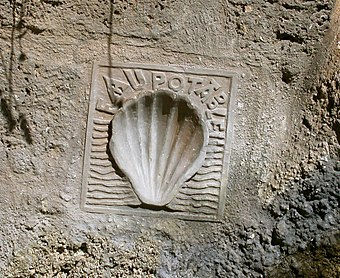
Various practices have since been developed to mark participation in this pilgrimage. One of which is the earning of a compostela, a certificate of participation issued at Cathedral of Santiago de Compostela. Pilgrims usually purchase and carry a passport called the credencial, which qualifies access to accommodation or hostels along the routes. The pilgrims bring the passport and earn stamps from the various sites plus the final compostela at the end. To earn the compostela, one has to walk at least 100 km and the walk must be faith-based rather than tourism like us. We met a number of these pilgrims in the city.
Part of the French Saint James's Way is featured in the 2010 movie The Way.
Toponymy
The town was named after Saint William of Gellone (Saint Guilhem de Gellone) who built the abbey here in the early 9th century CE. The area then was virtually barren and uninhabited and hence called the desert.
The name Santiago is the local Galician evolution of vulgar Latin Sancti Iacobi, meaning Saint James or Saint Jacob. In French it is known as Saint Jack (Saint Jacques), which is phonetically closer to James's Hebrew name.
See
Saint-Guilhem-le-Désert
Essentially a tiny mediaeval village along Saint James's Way, Saint-Guilhem-le-Désert is one of the towns that is listed as the most beautiful villages of France (Plus Beaux Villages de France), and one should not be in awe with its beauty. It brims with a provincial atmosphere of French mediaeval age, literally taking a page off Beauty and the Beast.
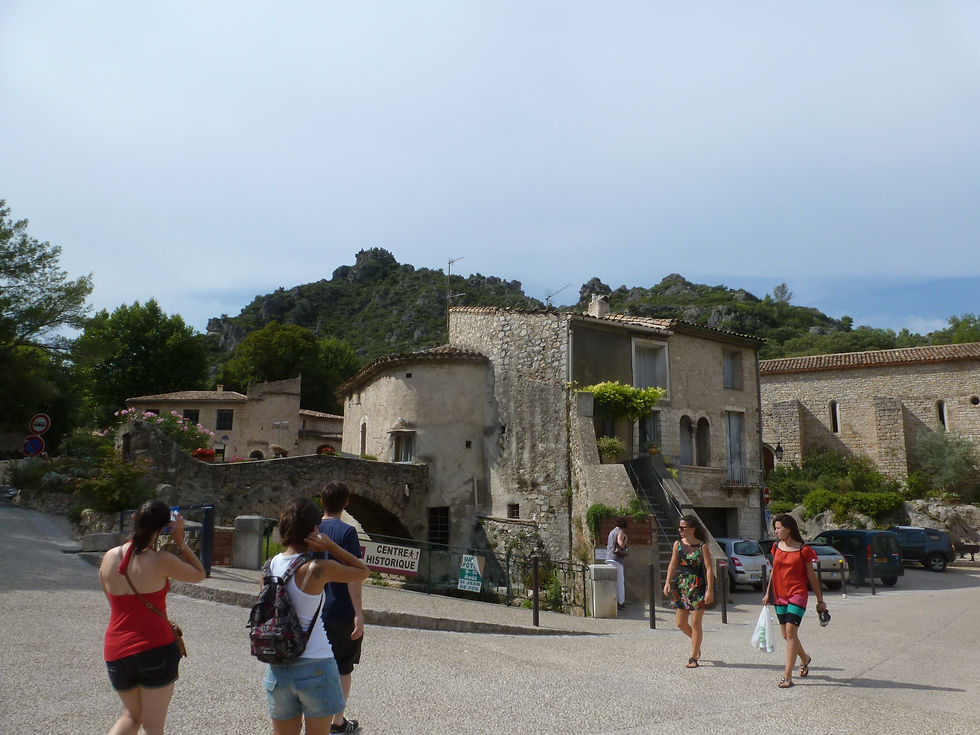
The town started after the abbey when Saint William was the second Duke of Toulouse (Comte de Toulouse) during the period. The town developed around the abbey as a result.
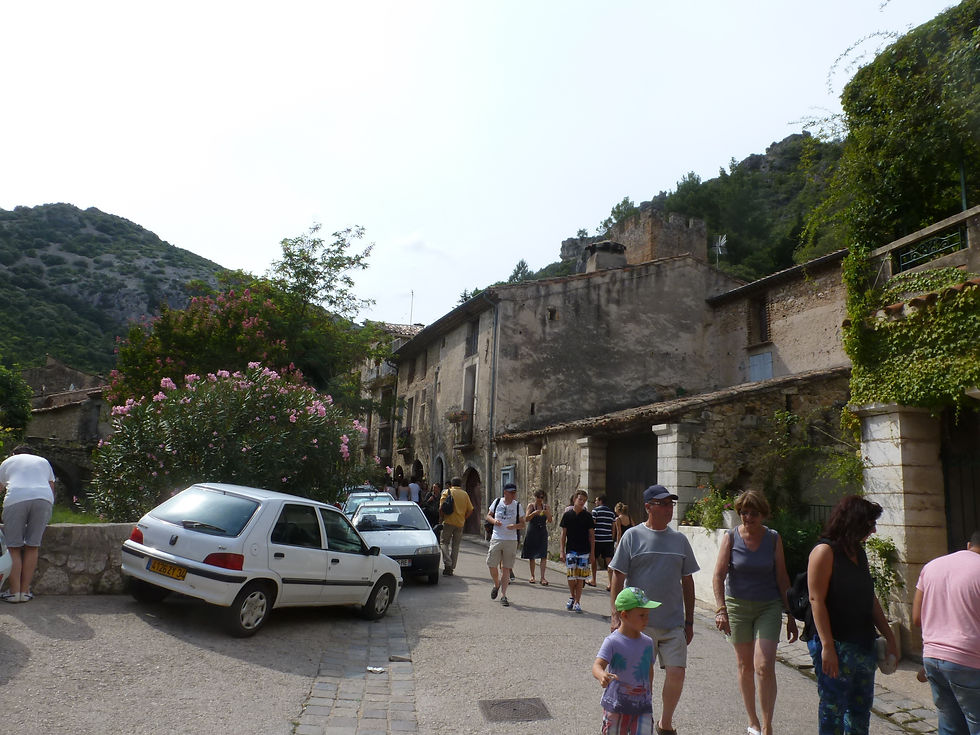
Old Abbey of Gellone (L'Ancienne Abbaye De Gellone)

The abbey became a very important pilgrimage site in the Middle Ages due to a relic of a piece of the True Cross was housed here. The piece of the relic came from his cousin Charlemagne (né Charles Martel) who in turn had received the relic from the Patriarch of Jerusalem (Hebrew: פטריארך ירושלים). The relic is not for public display.
The abbey subsequently served as one of the dining halls for the monks and pilgrims along the journey, an ancient form of Airbnb. Consequently, Saint William was buried in the abbey naturally.
Stone wall (Mur de pierre)
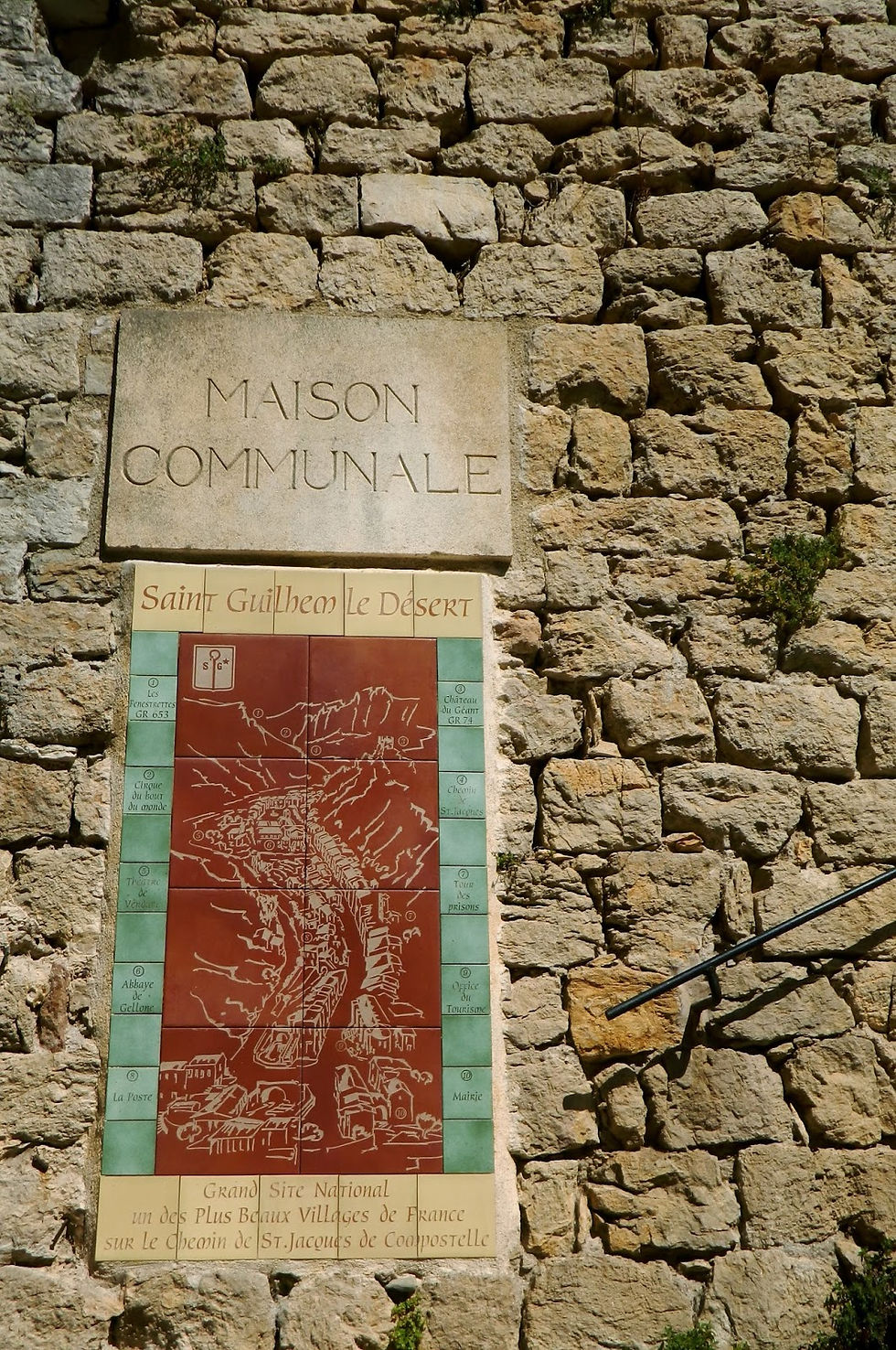
One cannot help to notice that almost everything in Saint-Guilhem-le-Désert is built in dry stones. Stone-walling is a building method by which structures, typically wall-boundaries and retaining walls are constructed from stones without any mortar or plaster to bind them together. Dry stone structures are stable simply by carefully selecting interlocking quarry stones of interlocking shapes and carefully placed them together, to create a load-bearing structure. Smaller filler stones are packed into the voids to for further support. Usually, and especially for retaining walls, the final layer on the top of the wall is constructed with large stones, called capstones, that span the entire width of the wall to prevent it from breaking apart.
Stone-walling has been there since the Stone Age, but is still practised today, although this sporadic form of construction is slowly being eliminated. This is recently inscribed as an ICH.
Devil's Bridge (Pont du Diable)

The Devil's Bridge (Pont du Diable) is simply an ancient connecting bridge between Saint-Guilhem-le-Désert across the river to the other city Saint-Jean-de-Fos. There is nothing evil about the bridge, it is simply a name given to a number of bridges that represent a significant technological achievement in ancient architecture due to their unusual and then impossible design and they were looked upon as object of fascination and miraculous achievements. There are quite a number of similarly named Devil's Bridges in Europe.
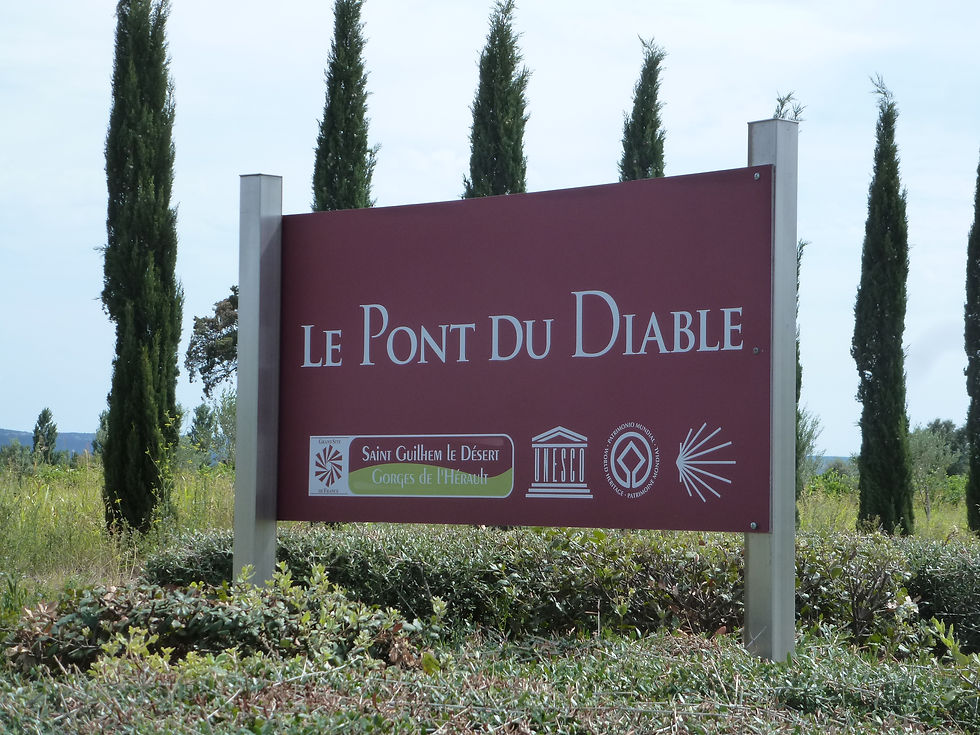
Constructed by Benedictine monks in the first half of the 11th century CE, it provided the main link between the Gellone Abbey across the river and hence all pilgrims have to cross and admire the bridge during their journeys.
Clamouse Caves (Grotte de Clamouse)
Considered one of the most beautiful caves in France, the Clamouse Caves (Grotte de Clamouse) is located just a stone's throw from the Devil's Bridge. Unfortunately we did not find enough time to explore it.
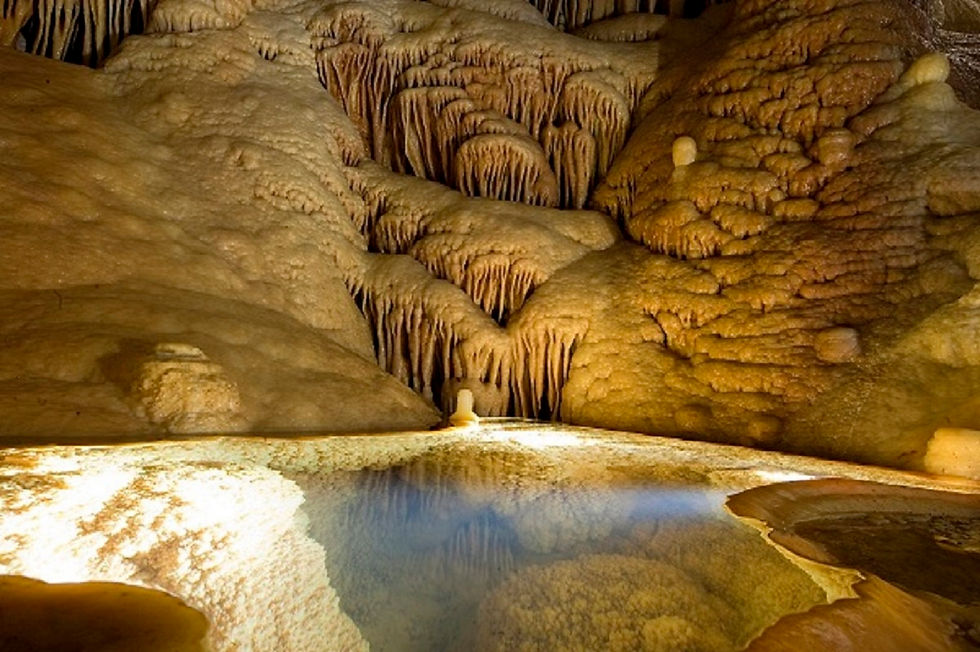
Getting There and Around
Walk, it is a pleasant stroll for a good-half day. The town is served by bus.
UNESCO Inscriptions
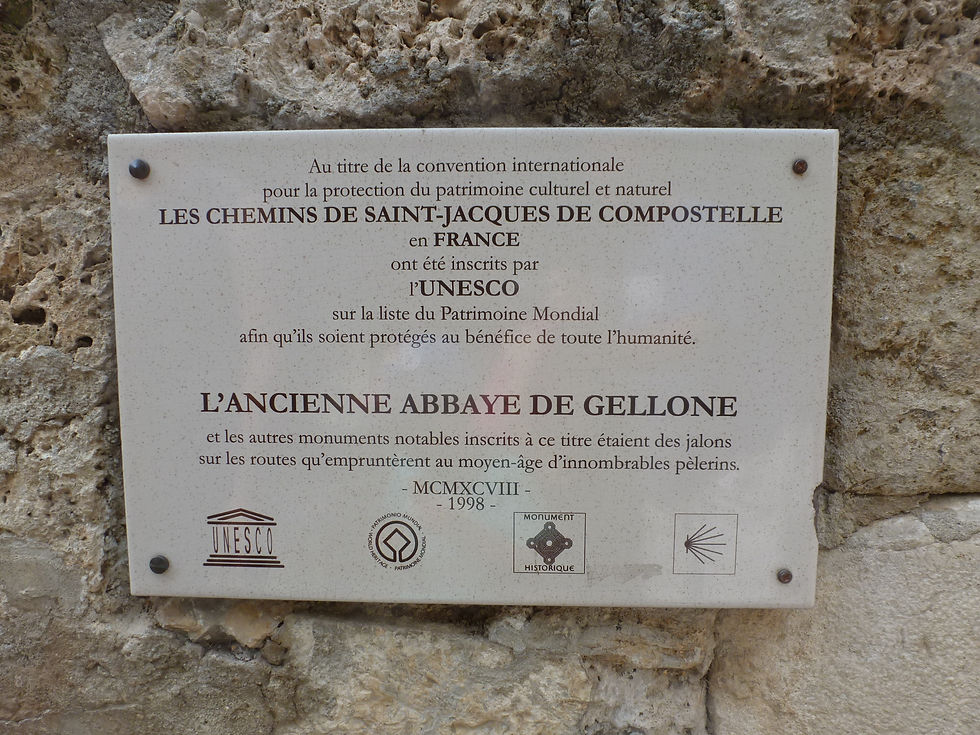
Santiago de Compostela was the supreme goal for countless thousands of pious pilgrims who converged there from all over Europe throughout the Middle Ages. To reach Spain pilgrims had to pass through France, and the group of important historical monuments included in this inscription marks out the four routes by which they did so.
The art of dry stone walling concerns the knowhow related to making stone constructions by stacking stones upon each other, without using any other materials except sometimes dry soil. Dry stone structures are spread across most rural areas – mainly in steep terrains – both inside and outside inhabited spaces, though they are not unknown in urban areas. The stability of the structures is ensured through the careful selection and placement of the stones, and dry-stone structures have shaped numerous, diverse landscapes, forming various modes of dwelling, farming and husbandry. Such structures testify to the methods and practices used by people from prehistory to today to organize their living and working space by optimizing local natural and human resources. They play a vital role in preventing landslides, floods and avalanches, and in combating erosion and desertification of the land, enhancing biodiversity and creating adequate microclimatic conditions for agriculture. The bearers and practitioners include the rural communities where the element is deeply rooted, as well as professionals in the construction business. Dry stone structures are always made in perfect harmony with the environment and the technique exemplifies a harmonious relationship between human beings and nature. The practice is passed down primarily through practical application adapted to the particular conditions of each place.
References
コメント